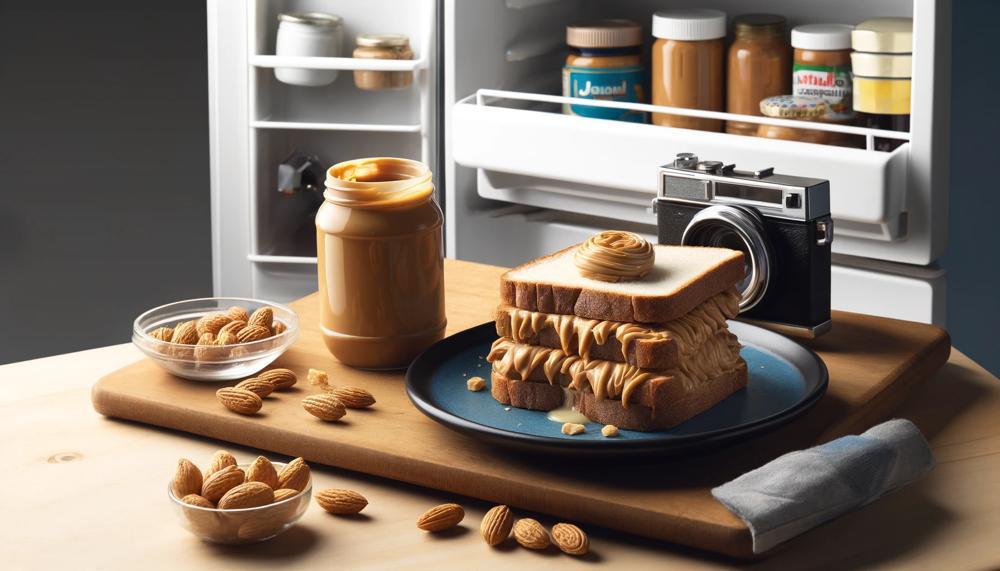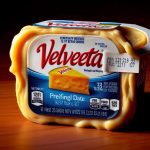Ever wondered if a peanut butter sandwich needs to be kept in the fridge? It all comes down to what else is in the sandwich. While peanut butter is okay at room temperature, other ingredients, like meat, need to stay cool. Want to know how to keep your peanut butter sandwich fresh and safe? Does a peanut butter sandwich need to be refrigerated?
The answer is no, peanut butter sandwiches don’t need refrigeration. Microbes cannot live in peanut butter and jelly sandwiches due to their sugar content. When refrigerated, the bread will become harder and lose moisture. When stored at room temperature or in a lunchbox, homemade sandwiches are best eaten within 24 hours. Stored in the fridge, they may keep for two to three days. Although freezing isn’t very frequent, sandwiches may freeze for one to three months.
A PB&J is more likely to be soggy the longer it has been cooked since the jam or jelly soaks into and through the bread.
The range of temperatures between 40°F and 140°F is known as the temperature danger zone. The growth of germs that cause foodborne disease may start at warm temperatures, 60°F and higher. They proliferate quickly at 80°F and higher temperatures.
Contents
Key Takeaways:
- Peanut butter sandwiches don’t need refrigeration, but perishable fillings should be kept cold for food safety.
- The Temperature Danger Zone between 40°F and 140°F is where bacteria multiply rapidly, so it’s important to avoid leaving sandwiches at warm temperatures.
- Safe packing practices, like using an insulated tote and freezing sandwiches, can help maintain the freshness of a peanut butter sandwich.
- Non-perishable food options exist for packed lunches that don’t require refrigeration.
- Cleanliness, avoiding cross-contamination, and considering cafeteria options can enhance the safety and variety of packed lunches.
Understanding the Temperature Danger Zone
The Temperature Danger Zone is important for food safety. It relates to how bacteria grows and the chance of getting sick from food. Let’s find out more about this temperature range, its risks, and ways to stop bacteria from growing.
What is the Temperature Danger Zone?
This Danger Zone is a temperature range from 40°F to 140°F (4°C to 60°C). In this range, bacteria grow quickly. This increases the chances of foodborne illnesses.
**Bacteria multiplication** happens naturally when food is warm. In this zone, bacteria can double every 20 minutes. This can quickly become a problem.
The Risks of Bacterial Growth
If food stays in the Temperature Danger Zone too long, bad bacteria can multiply. Eating food with these bacteria can make people seriously sick. Illnesses like salmonella, E. coli, and listeria can occur.
Foodborne illness can lead to symptoms like nausea, vomiting, and diarrhea. It can sometimes be so severe that it requires hospital care or, in rare cases, can lead to death.
Preventing Bacterial Growth
It’s vital to handle and store food properly to prevent bacteria. Here’s how:
- Store foods like meat and poultry in the fridge at temperatures below 40°F (4°C) until it’s time to cook or eat them.
- Make sure you cook food well to destroy any bacteria.
- Cool cooked food quickly to stop bacteria from multiplying.
- Don’t leave food out for too long, especially when it’s warm.
- Use a thermometer to check that food is cooked and stored at safe temperatures.
Following these steps can help keep the Temperature Danger Zone under control. This will help prevent foodborne illnesses.
Safe Internal Temperatures for Cooking
| Food | Safe Internal Temperature |
|---|---|
| Poultry (chicken, turkey) | 165°F (74°C) |
| Ground meats (beef, pork, lamb) | 160°F (71°C) |
| Steaks, roasts, fish | 145°F (63°C) |
| Eggs and egg dishes | 160°F (71°C) |
| Leftovers and casseroles | 165°F (74°C) |
Making sure your food hits these safe temperatures can kill bacteria. This reduces the risk of getting sick from food.
Safe Packing Practices for Peanut Butter Sandwiches
Packing a peanut butter sandwich safely is key. Following proper practices keeps it fresh and safe to eat. Here are a few tips:
Insulated Tote
Use an insulated tote for your sandwich. It keeps the sandwich cool, stopping bacteria from growing. This is vital in warm weather or if the sandwich sits for hours.
Freezing Sandwiches
Freezing your sandwich is smart, especially with coarse bread. It stays fresh longer. Just wrap it well before freezing. When you’re hungry, let it thaw or warm it slightly.
“Freezing sandwiches is smart for keeping them fresh. Ensure they’re well-wrapped to avoid freezer burn.” – Nutritionist Jane Smith
Mayonnaise-Based Salads
Keep mayonnaise salads cold to stop bacteria growth. Put salads in separate containers with an ice pack in your tote. Use store-bought mayonnaise, it’s made with pasteurized eggs and safer.
Preparing and Refrigerating the Entire Lunch
Prepare and chill your lunch the night before. Pack your sandwich, salads, and fruits. Everything stays fresh and safe by morning.
Frozen Shelf-Stable Juice Boxes
Try using frozen juice boxes instead of perishable drinks. They double as ice packs. By lunchtime, they’re ready to drink and have kept your lunch cool.
Follow these tips for a tasty and safe peanut butter sandwich lunch. Use insulated totes, freeze sandwiches, chill salads, prep and refrigerate your lunch, and try frozen juice boxes. Enjoy!
Food Options That Do Not Require Refrigeration

Keeping food fresh and safe without a fridge is key for packed lunches. There are many non-perishable foods that are perfect for meals on the go. They offer different flavors, textures, and nutrients. Here are some non-perishable food ideas that don’t need to be refrigerated:
- Canned meat and poultry
- Shelf-stable processed cheese
- Peanut butter
- Peanuts
- Other nuts and seeds
- Snack pack type puddings
- Fresh fruits and vegetables (such as bananas, apples, oranges, carrot sticks)
- Dried fruit
- 100% vegetable or fruit juice in shelf-stable boxes
These options cover a wide range of tastes and textures. For example, canned meat and poultry are great protein sources. Shelf-stable cheese can add a savory taste to your meal. Peanut butter works well with fruit or by itself for a filling snack.
Nuts and seeds add a satisfying crunch and are full of nutrients. For a sweet treat, try snack pack puddings. Fresh fruits and veggies like bananas and carrots are refreshing and healthy. Dried fruit is easy to carry and naturally sweet. Lastly, 100% juice boxes are good for hydration and vitamins.
By choosing these non-perishable foods, you get tasty and safe meal options without needing a fridge. They are convenient, nutritious, and ideal for meals on the move or places without refrigeration.
Additional Considerations for Packing Lunches
When packing lunches, keeping them clean is key for food safety. This helps avoid contamination and foodborne illnesses. Here are some top tips:
Maintaining Cleanliness:
Before packing lunches, I ensure everything is clean. This includes washing utensils, bowls, and countertops. It keeps bacteria away and prevents cross-contamination.
Avoiding Cross-Contamination:
Cross-contamination happens when raw and cooked foods mix. I prevent this by cleaning all cookware and utensils after each use. This keeps lunches safe.
Using a Thermos for Cold Beverages:
Using a thermos keeps juices cold all day. It’s great for maintaining the drink’s temperature and keeping bacteria at bay.
Fresh Milk Options:
For fresh milk, store-bought options are best. Many schools also sell milk, making it easy and safe for packed lunches.
Exploring Cafeteria Options:
Don’t forget to check what the school cafeteria offers. They usually have milk, yogurt, and salads. These add variety and extra nutrition to packed lunches.
To make packed lunches better and safer, focus on cleanliness. Avoid cross-contamination, use a thermos, and choose fresh options. This ensures kids enjoy healthy lunches at school.
Conclusion
Packing and storing a peanut butter sandwich right keeps it fresh and safe. Even though peanut butter doesn’t need to be cold, fillings like meat do. To stop bacteria, use an insulated bag and freeze your sandwiches.
Think about choosing foods that don’t need refrigeration for your lunches. These foods offer variety and are safe to eat. Keeping your eating areas clean and exploring what the cafeteria offers can make lunch better. Following these tips ensures your peanut butter sandwich stays fresh and safe.
Always remember, good storage and food safety are key for packed lunches. This applies whether it’s a peanut butter sandwich or any meal. By taking care of food safety, you can enjoy your lunch worry-free.
Source Links




